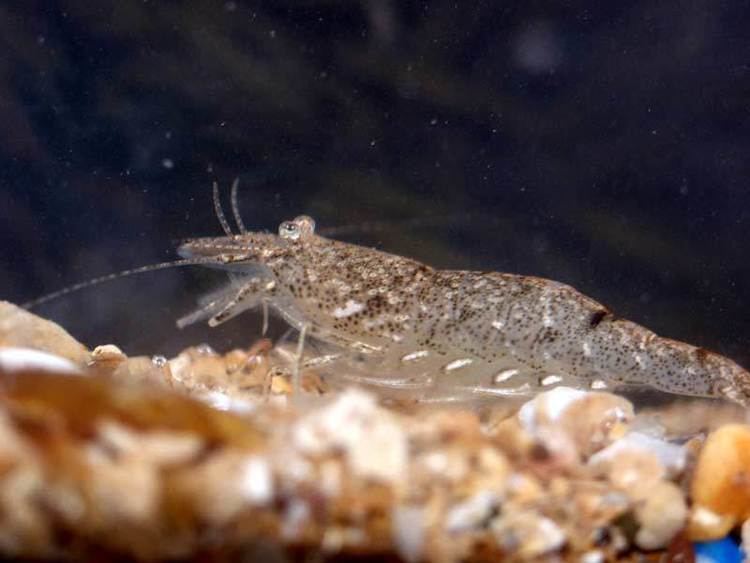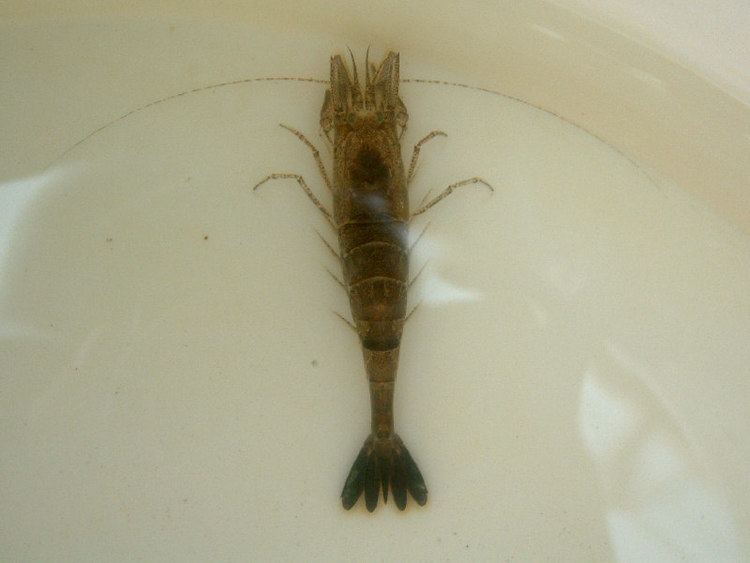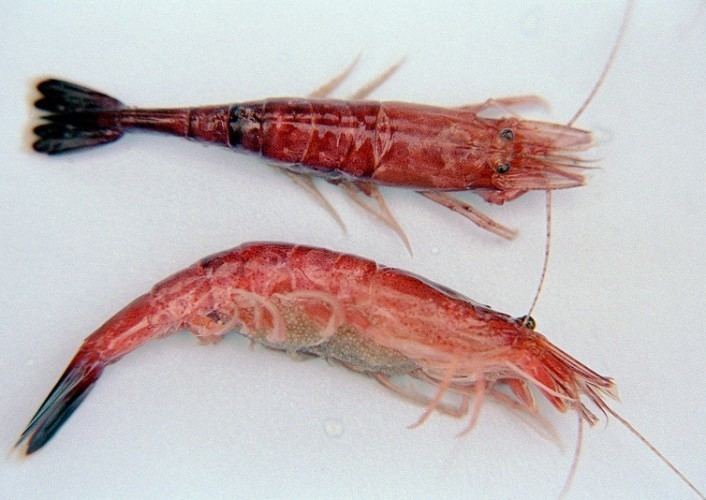Scientific name Crangon crangon Higher classification Crangon | Genus Crangon Rank Species | |
 | ||
Similar Crangon, Crustacean, Pandalus borealis, Carcinus maenas, Homarus | ||
Sand shrimp crangon crangon in native tank in ireland hd
Crangon crangon is a commercially important species of caridean shrimp fished mainly in the southern North Sea, although also found in the Irish Sea, Baltic Sea, Mediterranean Sea, and Black Sea, as well as off much of Scandinavia and parts of Morocco's Atlantic coast. Its common names include brown shrimp, common shrimp, bay shrimp, and sand shrimp, while translation of its French name crevette grise (or its Dutch equivalent grijze garnaal) sometimes leads to the English version grey shrimp.
Contents
- Sand shrimp crangon crangon in native tank in ireland hd
- Crangon crangon and diogenes pugilator marine saltwater fish tank
- Description
- Distribution and ecology
- Lifecycle
- Fishery
- As food
- References

Crangon crangon and diogenes pugilator marine saltwater fish tank
Description

Adults are typically 30–50 mm (1.2–2.0 in) long, although individuals up to 90 mm (3.5 in) have been recorded. The animals have cryptic colouration, being a sandy brown colour, which can be changed to match the environment. They live in shallow water, which can also be slightly brackish, and feed nocturnally. During the day, they remain buried in the sand to escape predatory birds and fish, with only their antennae protruding.

Crangon is classified in the family Crangonidae, and shares the family's characteristic subchelate first pereiopods (where the movable finger closes onto a short projection, rather than a similarly sized fixed finger) and short rostrum.
Distribution and ecology

C. crangon has a wide range, extending across the northeastern Atlantic Ocean from the White Sea in the north of Russia to the coast of Morocco, including the Baltic Sea, as well as occurring throughout the Mediterranean and Black Seas. Despite its wide range, however, little gene flow occurs across certain natural barriers, such as the Strait of Gibraltar or the Bosphorus. The populations in the western Mediterranean Sea are thought to be the oldest, with the species' spread across the north Atlantic thought to postdate the Pleistocene.

Adults live epibenthically (on or near the sea-floor) especially in the shallow waters of estuaries or near the coast. It is generally highly abundant, and has a significant effect on the ecosystems where it lives.
Lifecycle

Females reach sexual maturity at a length around 22–43 mm (0.87–1.69 in), while males are mature at 30–45 mm (1.2–1.8 in). The young hatch from their eggs into planktonic larvae. These pass through five moults before reaching the postlarval stage, when they settle to the sea-floor.
Fishery
Historically, the commercial fishery was accomplished on horseback on both sides of the Dover straits.
Over 37,000 t of C. crangon were caught in 1999, with Germany and the Netherlands taking over 80% of this total.
As food
The brown shrimp enjoys great popularity in Belgium and its neighbouring countries. It is the basis of the dish tomate-crevette, where the shrimp are mixed with mayonnaise and served in a hollowed-out uncooked tomato. The shrimp croquette is another Belgian specialty; the shrimp are in the interior of the battered croquette along with béchamel sauce. Freshly cooked, unpeeled brown shrimp are often served as a snack accompanying beer, typically a sour ale or Flemish red such as Rodenbach.
In Lancashire, England, the brown shrimp is mixed with butter to make potted shrimps, a dish traditionally eaten with bread.
